Earthship Homes Complete Guide, Pros, Cons, What They Are
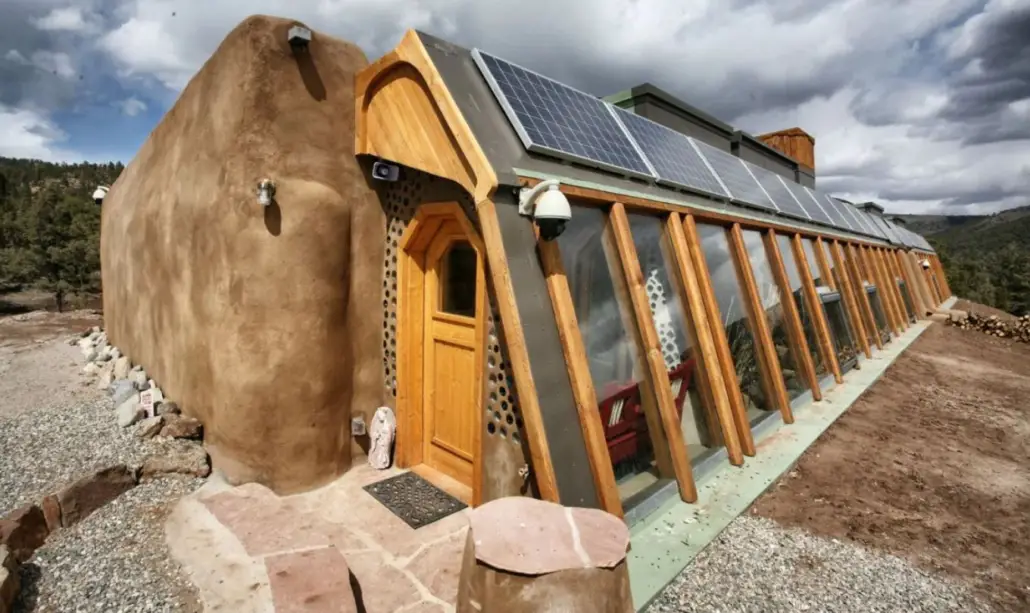
Earthship homes are much more than a means of alternate housing.
They fill a very important role in modern society by allowing people to live sustainably off the earth and disconnect from the grid. It isn’t even about being a hippy.
While Earthship homes are most certainly green, they have transcended the demographic of individuals who are hyper-aware of the human impact on the environment.
They have become unique personal statements. People want them because they simply want to live uniquely.
What Is An Earthship?
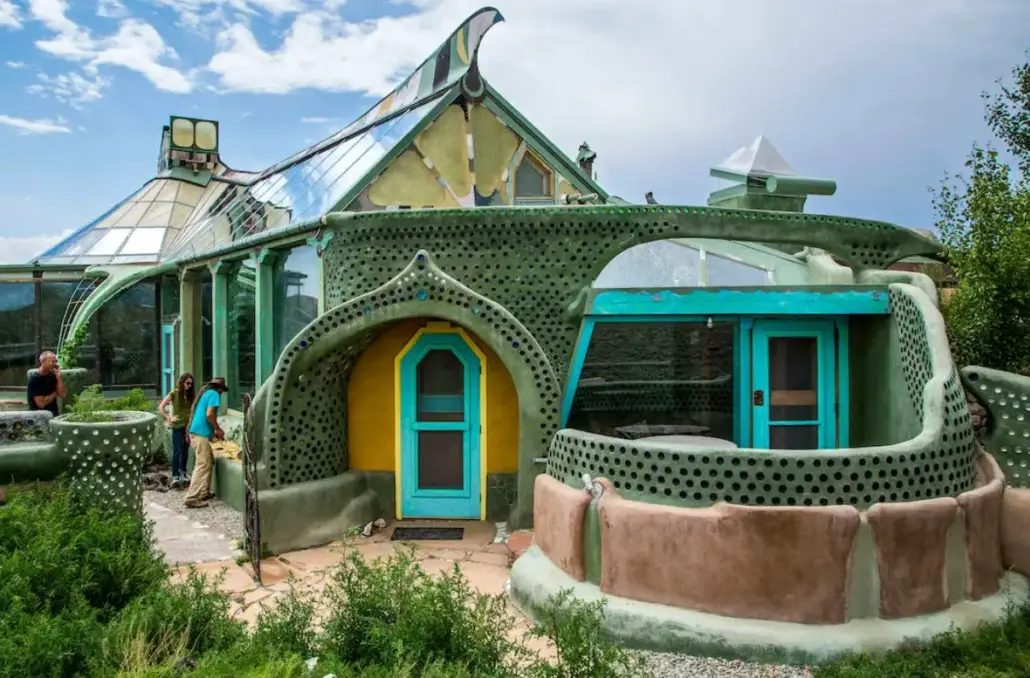
An Earthship home is a trademarked type of sustainable home.
The structure of the home itself is intended to provide some of the basic human needs we will get into a bit later.
It is made up recycled and upcycled materials to minimize the impact on the environment.
While there have been some people who have mimicked Earthship homes, the only ones that are allowed to legally be called “Earthships” come from a company called Earthship Biotecture.
This company manufactures these homes themselves and sells them to private consumers.
Today, it is estimated that there are about 3,000 Earthship homes being lived in around the world.
There has been increasing interest in them as of recently however, with the pandemic making it more difficult to get to the store and shop for supplies.
The 6 Basic Needs
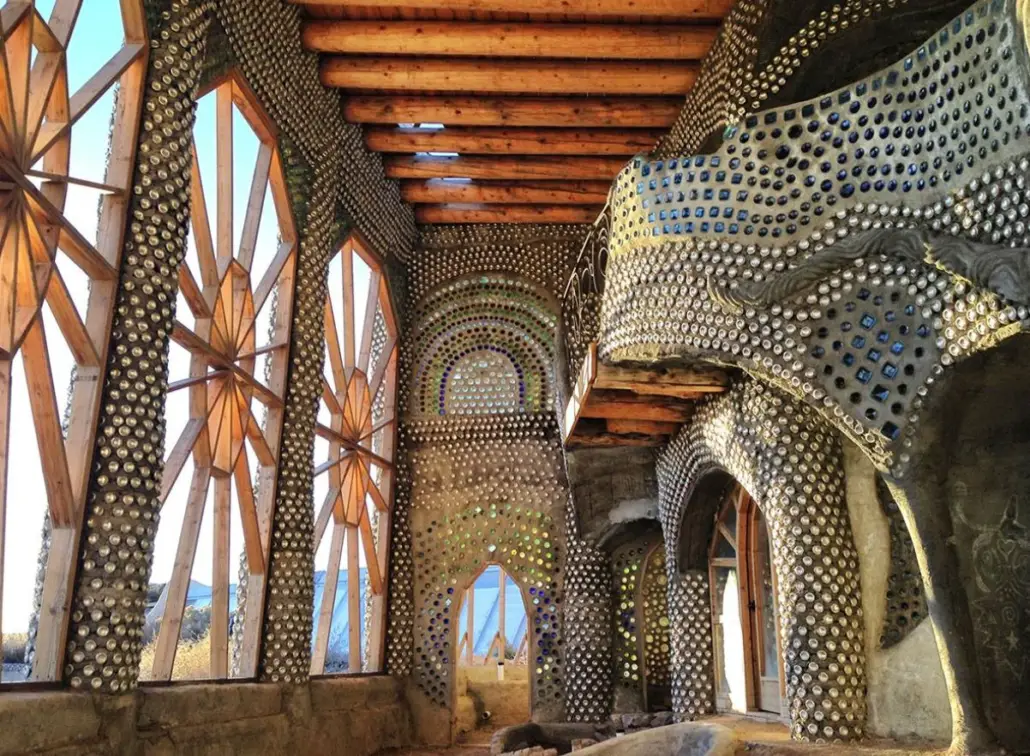
According to the founder of Earthship Biotecture, Micheal Reynolds, the homes were built in order to provide the 6 basic needs of humans:
#1 – Shelter
Earthships provide shelter because they are built out of recycled materials.
They are usually made from tires that are filled with Earth.
#2 – Water
It provides water by collecting it from the environment.
The roof catches rain and condensation and channels it to a filtering system which cleans out all the bacteria and contaminants.
#3 – Food
Earthship home are set up so that people can grow their own vegetables and fruits.
Most of them are built with an indoor greenhouse section that captures the suns rays to help grow food.
#4 – Energy
Earthship homes generate their own energy through the use of photovoltaic panels and wind turbines.
The panels capture solar energy which is then stored by batteries which are housed in a dedicated space on the roof.
The wind turbines also collect energy which is then transferred to DC electricity. The panels and turbines are typically attached directly to the structure or near it.
#5 – Garbage Management
Earthship homes are made of recycled materials.
Owners of Earthship homes are encouraged to continue using recycled materials for shoring up the structure over the years to minimize waste.
#6 – Sewage Treatment
Earthship homes use reclaimed water that has been used once in the sink or shower when the toilet is flushed.
Liquid waste is then treated and then fed to the nearby agricultural or garden set up where the water and nutrients from the waste can be used.
The History Of Earthship Homes
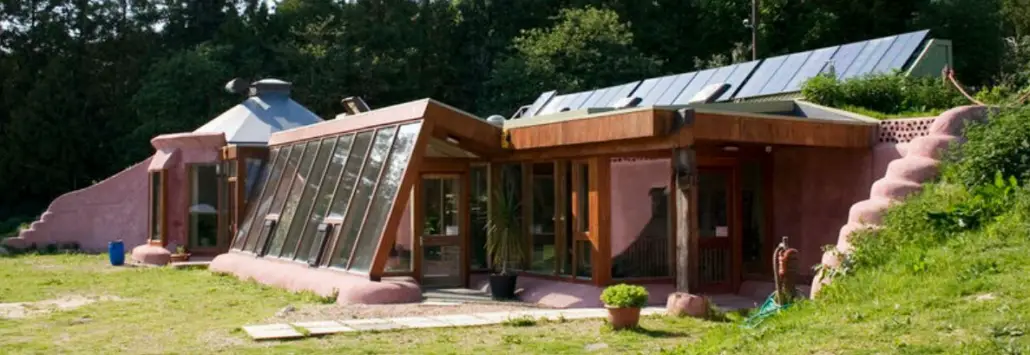
The concept of the first Earthship home took shape in 1970.
An architect named Michael Reynolds had the idea of building a home that would provide the inhabitants with the basic human needs. Sort of like how a space ship conceptually provides the people in it with the means to live.
They were made so that anyone could live sustainably off the grid. He also wanted these structures to be easy enough to build for people with no construction background.
The idea took off after he built his prototype home and has been building steam ever since.
Today, Earthship Biotecture is based in Taos, New Mexico and virtually anyone can purchase a ready-built Earthship home for themselves and their family.
Where Are Earthships Mostly Found?
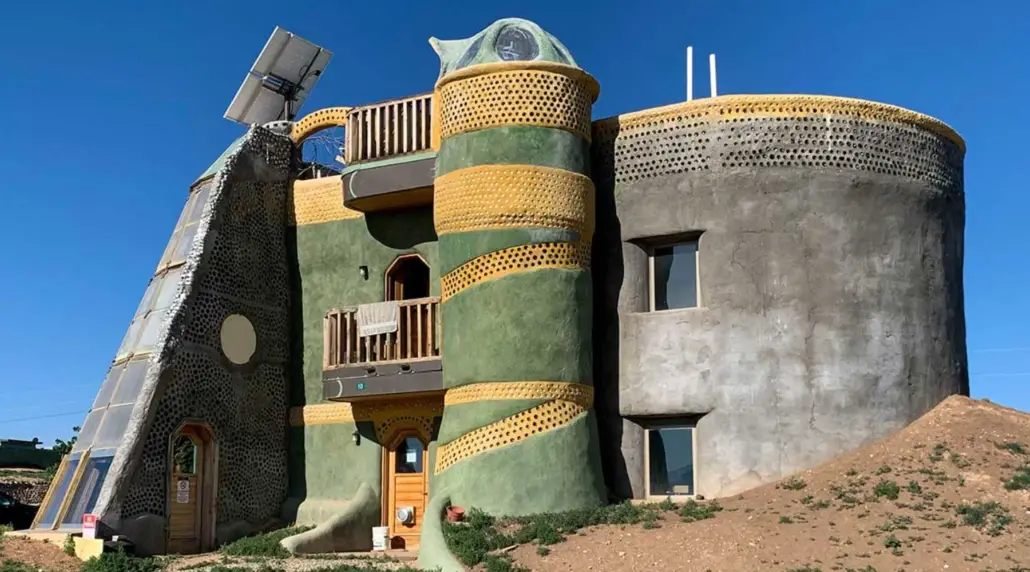
Over the years, Earthships have been built all around the world.
There are a small handful in Central America, some in South Africa, South America and Australia.
The highest concentration of Earthship homes however is here in the United States.
To be more specific, the highest concentration of Earthship homes is in New Mexico where the company that produces them is based. The second highest concentration is in nearby Colorado.
There might have been more Earthships around the world but the construction is not always allowed.
For example, construction of an Earthship was banned in Belgium in 2000. Most of the time, it is fairly easy to get the permits required to build an Earthship.
Sometimes though, depending on the terrain and local zoning laws, they can be difficult to build.
Since it is a relatively new and radically different approach to construction and living in general, some places simply don’t have the zoning laws to accommodate them.
This can make it difficult to build one in some areas and one of the reasons why Earthship homes aren’t more prolific around the world.
What Kinds Of People Live In Earthship Homes?
Contrary to popular belief, Earthship homes aren’t typically inhabited by radical environmentalists.
Because they typically cost less than a stick built home, they have become popular among people who are interested in alternative houses – along with shipping container homes, tiny homes and the like.
In the end though there are all kinds of people who live in Earthship homes. The concept especially appeals to people who want to be more independent.
People who have become fed up with rolling blackouts and inefficient power transmission are also taken by the Earthship concept.
Living in an Earthship could also save you a significant amount of money over time because you will have to buy groceries less and pay less for utilities.
While many Earthship homes still do use grid power, they generate a significant amount on their own.
Likewise, many people who live in Earthship homes still do shop at grocery stores but don’t have to buy so much since they grow a significant amount of their own food.
This frugal way of living also appeals to people who simply want to save as much money as possible.
Is It Possible To Build Your Own Earthship?
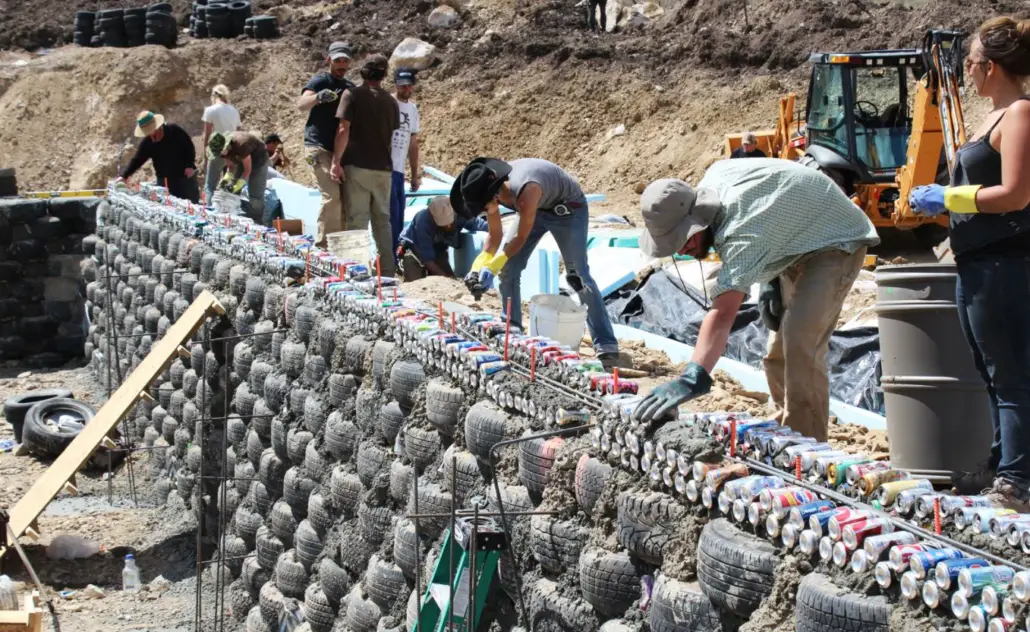
Yes. In fact the Earthship Biotecture website has guides and books on how to build your own.
However, building your own Earthship may be a taxing and time-consuming endeavor. Some people have reported that it took up to two years to build their own Earthship.
The upfront cost can be quite considerable as well. While there is no universal cost for building your own Earthship, it is estimated that it will run you $150-$225 per square foot.
Are There Contractors that Build Earthships?
Yes. Over the years a variety of specialized contracting companies have sprung up in certain parts of the world that will build your Earthship.
Some of the most notable Earthship contractors include Pangea Builders and Earthship Global.
10 Earthship Pros

#1 Sustainable Living
One of the most important benefits of an Earthship home is that it allows you to grow your own food and generate your own power.
#2 Unique Living Space
Aside from being ecologically responsible, Earthship homes also offer unique architecture that appeals to people who want to make an aesthetic statement with their home.
#3 Simple Construction
The concept of Earthship was to allow people with no construction backgrounds to build their own homes. With some basic knowledge and the right tools, almost anyone can build their own.
#4 Great Views
Most Earthships have an entire side of the structure made of windows to harvest thermal energy from the sun. This also creates some spectacular views.
#5 Independent Living
Earthship homes lessen your dependence on the supply chain and grocery stores since you can grow most of your own food.
#6 Survival
Another aspect that draws a lot of people to Earthships is the idea of living off the grid.
In a disaster when the power grid may go down or become compromised, Earthship homes can generate their own power.
#7 Savings
Since you will be generating at least a portion of your own power, water, gas and food, Earthship homes can actually save you money in the long-run.
#8 Initial Costs
While the initial cost to build your own Earthship or to have one built for you may seem steep, most of them are still cheaper than buying a traditional stick-built home.
#9 Multiple Designs
Over the years Earthship homes have gotten boutique. They now come in a variety of styles and designs.
#10 Good for the Environment
Of course, since Earthships are constructed from recycled materials, they are good for the environment.
5 Earthship Cons
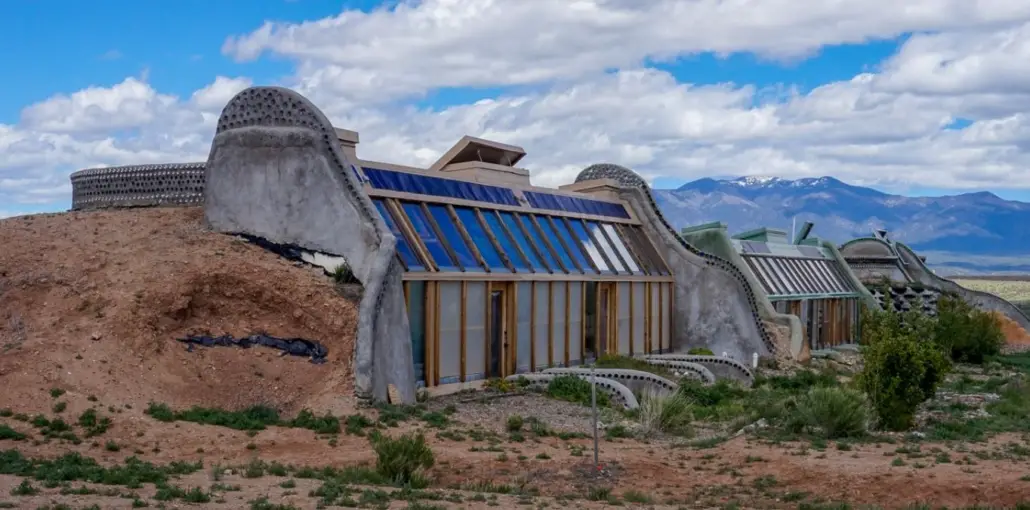
#1 Poor Insulation
Some Earthships are made with walls made of recycled glass bottles. The glass does a poor job of insulating the home.
#2 Permits
Depending on where you want to build your Earthship, it may be very difficult to obtain the proper permits.
#3 No Meat
While you can grow a decent amount of your own herbs, veggies and fruits in an Earthship; if you’re a meat-lover you’ll still have to go to the store, if you don’t want to raise some chickens in the garden
#4 Resale Value
If you ever want to sell your Earthship, you may take a significant loss because their resale value isn’t known to be great.
#5 Mold
In areas that get a lot of rain or humidity, there have been reports of Earthships being a breeding ground for mold and mildew.
Earthship FAQ’s
Where Can You Legally Build An Earthship?
The coding for Earthships and off-grid living is complex around the country.
States like California and Oregon make it legal to build Earthships but you still may have to check with specific county officials.
Why Do Earthships Use Tires?
Mainly because it is sustainable. The tires are packed with earth so they help with insulation.
Tires are also used because they are durable.
Can You Build An Earthship Without Tires?
It’s possible because it’s the actual berm that provides the insulation.
How Do Earthships Deal With Sewage?
Earthships reuse waste water for agriculture.
There are sewage treatment cells installed in most Earthships that make sewage water usable for other purposes.
Does Michael Reynolds Live in an Earthship
According to journalist Nick Rosen, Reynolds does not actually live in an Earthship himself.
Instead, he lives in a regular stick-built home that is very much on the grid.
Are Earthships Hard To Maintain?
Earthship homes can be hard to maintain especially in colder and wetter climates where mold may become a problem and the thermal mass concept loses effectiveness.
Are Earthships Worth It?
That’s a matter of opinion. There have been many people who report that they are very happy with their Earthship homes and don’t regret making the choice.
However, it seems to be very dependent on where yours is built. People have had trouble with them in non-arid climates where water can present a major problem for Earthships.
They also do not re-sell for very much if you ever plan on selling yours.
Why Are Earthships So Expensive?
They tend to be expensive for a couple of reasons. First of all they require special components that may be expensive in and of themselves.
Secondly, if you are planning to contract the construction out, the contractors who specialize in Earthship construction tend to charge a premium.
What Are Some Alternatives And How Do They Compare?
Tiny homes and shipping container homes are also good options because they are affordable and also have minimal ecological impact.
They can even be outfitted with solar cells. However, neither of these alternatives provide the sewage treatment and garbage management options that Earthships do.
Final Thoughts On Earthships
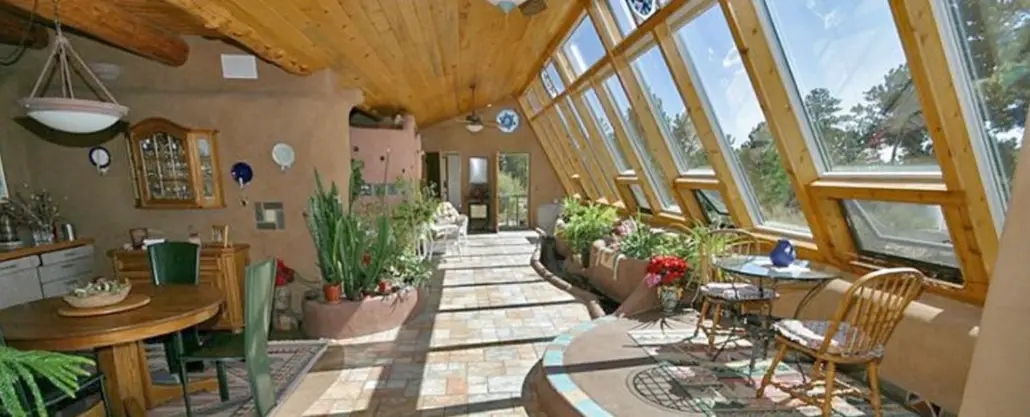
It’s clear that Earthships are not without their flaws. They seem to work better in drier climates than they do in wet ones.
There is also the problem of low resale value. However, that might not matter much to you if you are considering investing in one.
In the end, they represent a significant shift in the way people think about housing. For better or worse, Earthships have emerged as a viable means of alternative housing.


